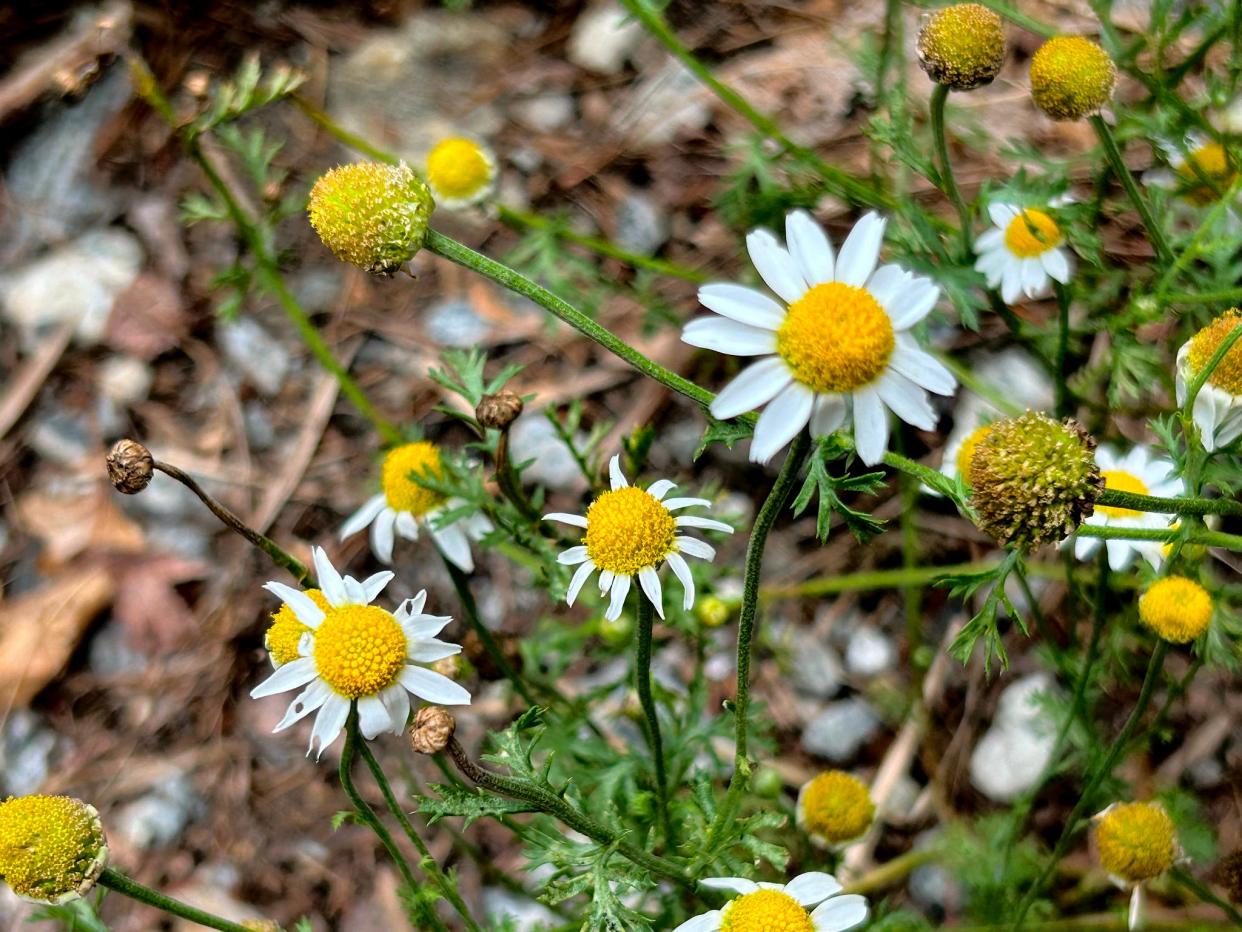Daisy-like herb has stinky foliage not fit for tea | Mystery Plant

We in the South are experiencing a very hot summer, hotter than normal. This leading to the consumption of a great deal of refreshing beverages, including a LOT of iced tea.
Both situations easily characterize Columbia, S.C., where I live: some say that it’s the hottest place on earth — which of course is a bit of a stretch. And that part about iced tea? Oh yes, we in “Soda City” are awash in iced tea, all year long; I’m not sure what our per capita indulgence of the stuff is, but I expect that it’s measured in the gallons.
There is a place here in town, one of my favorite spots for lunch, which features a marvelous iced tea “bar”: a huge canister of the sweetened stuff (very sweet!), as well as more modestly-sized canisters of flavored tea, including peach and raspberry, along with one relatively unpopular container of unsweetened tea, all offered with plenty of lemon slices, and fresh mint.
And ice — lots and lots of ice! I’ll have to confess that when I am visiting this tea bar I usually mix sweetened tea, the peach-flavored variety, with the unsweetened stuff while nobody is looking.
You probably already know that “tea” was more or less invented by the Chinese, a very long tome ago, and generally refers to the caffeinated beverage made from pouring boiling water over the dried leaves of the tea plant, a species of Camellia.
But there are plenty of versions of tea around the world made not of “standard” tea, but from the foliage of a number of plants unrelated to regular old “tea.” For instance, perfectly good teas are made from different species of holly: you may have heard of the “black drink,” developed by Native Americans, here in the Southeast, made from leaves of the yaupon holly, Ilex vomitoria.
And then there are herbal teas made from different sorts of herbs grown just for this purpose. “Chamomile,” or “Sweet chamomile,” is one of the best known, a plant in the daisy family with delightfully fragrant leaves, and whose scientific name is Matricaria chamomilla. This “true” Chamomile, and the tea made therefrom, has a wide following among herbal fanciers.
This plant is an annual species with divided leaves, and being daisy-like, has both rays flowers (white) and disk flowers (yellow), held together in a compact head. It is native to large portions of Europe and western Asia, and has been transported to the New World, and it can often be found in weedy places throughout the USA.
On the other hand, there is this week’s Mystery Plant ("Stinking chamomile," Anthemis cotula), pictured, which is not the fragrant herb giving us Chamomile tea, although the two plant species closely resemble each other.
Although our Mystery Plant is also from Europe, now distributed widely in North America, and with attractive daisy-like blooms, its foliage is rather smelly — some of the books would say it’s even “malodorous.”
This plant has been used medicinally for various ailments, and made into a tea, but it surely doesn’t taste as nice as the real thing.
John Nelson is the retired curator of the Herbarium at the University of South Carolina, in the Department of Biological Sciences. As a public service, the Herbarium offers free plant identifications. For more information, call 803-777-8175 or email [email protected].
This article originally appeared on Tallahassee Democrat: Daisy-like herb has stinky foliage used medicinally for ailments
